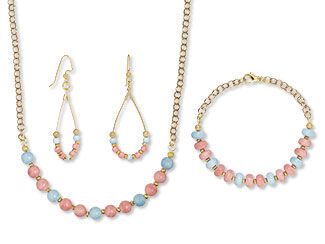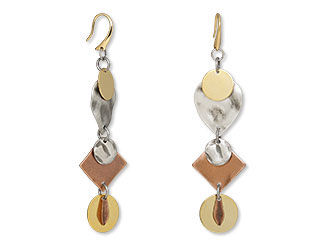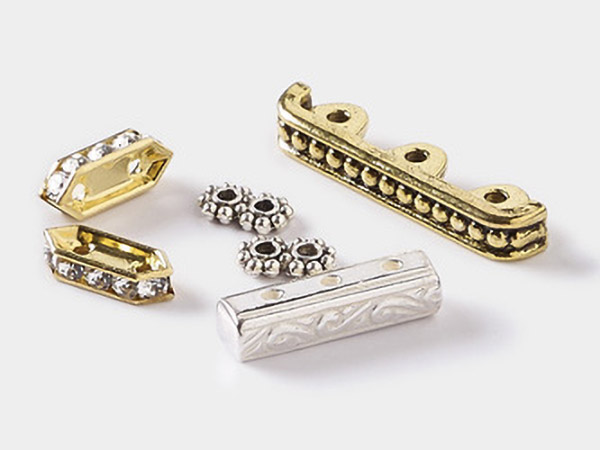One, Two, THREE! Using Three in Jewelry Design
Whether using triangles or through patterns, elements and colors, three is everywhere. It can create compelling and balanced jewelry while also simplifying the design process.
Triangles
Triangles are one of the first shapes children learn. They are simple to grasp, and that simplicity means they’re easy to design with.
They also provide natural arrows, allowing you to direct the eye flow of your designs, as seen in a zigzag, chevron or herringbone pattern. And when it comes to futuristic designs, few things beat the clean edges and sharp corners of a triangle.
They can also be combined to build increasingly complex geometrical shapes. When using triangles, experiment with nestling them together or layering them to create patterns.
Play with the different types of triangles to shift the look. A long isosceles lengthens, an equilateral brings perfect symmetry and a scalene will provide asymmetry.
Groups of Three
There is beauty in simplicity, and three can create clean and modern jewelry designs without being monotonous. Grouping items, like strands or beads, or utilizing patterns with three elements creates impactful jewelry. With just a handful of components, it’s easy to build rhythm, balance and flow in minimalist pieces.
The Color Trifecta
Color plays a crucial role in any design, but how much is too much? How many colors should you use? By selecting three, you can prevent designs from becoming too cluttered. And it will also help direct more attention to the focal pieces rather than risk distraction by the presence of too many colors. Sticking with a limited palette will also help to create attractive color variations quickly, which is especially useful for those selling jewelry with color options.
Before narrowing your color selection down to three, think of the feel of your piece and choose a palette. Once you have established the goal for your designs, selecting the individual hues becomes relatively simple.
Becoming familiar with color theory and using a color wheel will also come in handy when picking colors. You can use equal or varying amounts of the hues, or as a commonly used guideline suggests, divide them 60/30/10, allowing one color to be the focus and the other two to act as secondary and accent colors.
Shop for Your Materials Here:
Have a question regarding this article? Email Customer Service.
Copyright Permissions
All works of authorship (articles, videos, tutorials and other creative works) are from the Fire Mountain Gems and Beads® Collection, and permission to copy is granted for non-commercial educational purposes only. All other reproduction requires written permission. For more information, please email copyrightpermission@firemtn.com.













